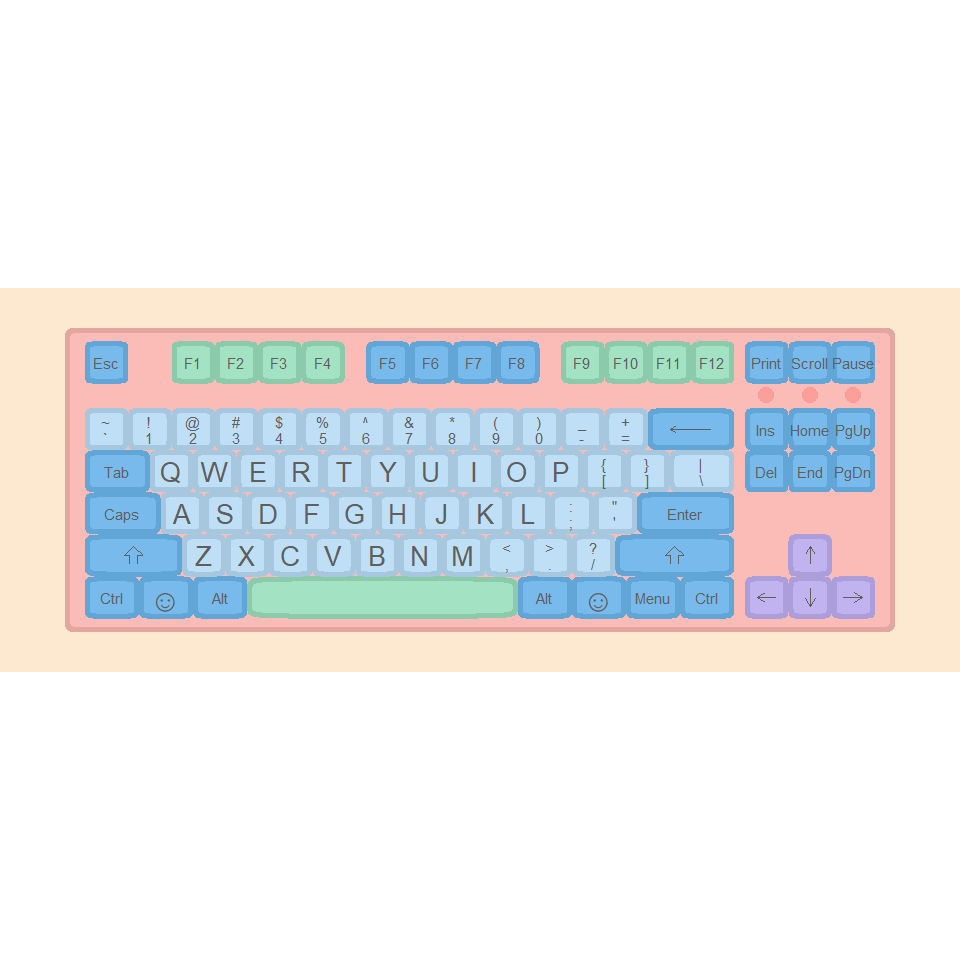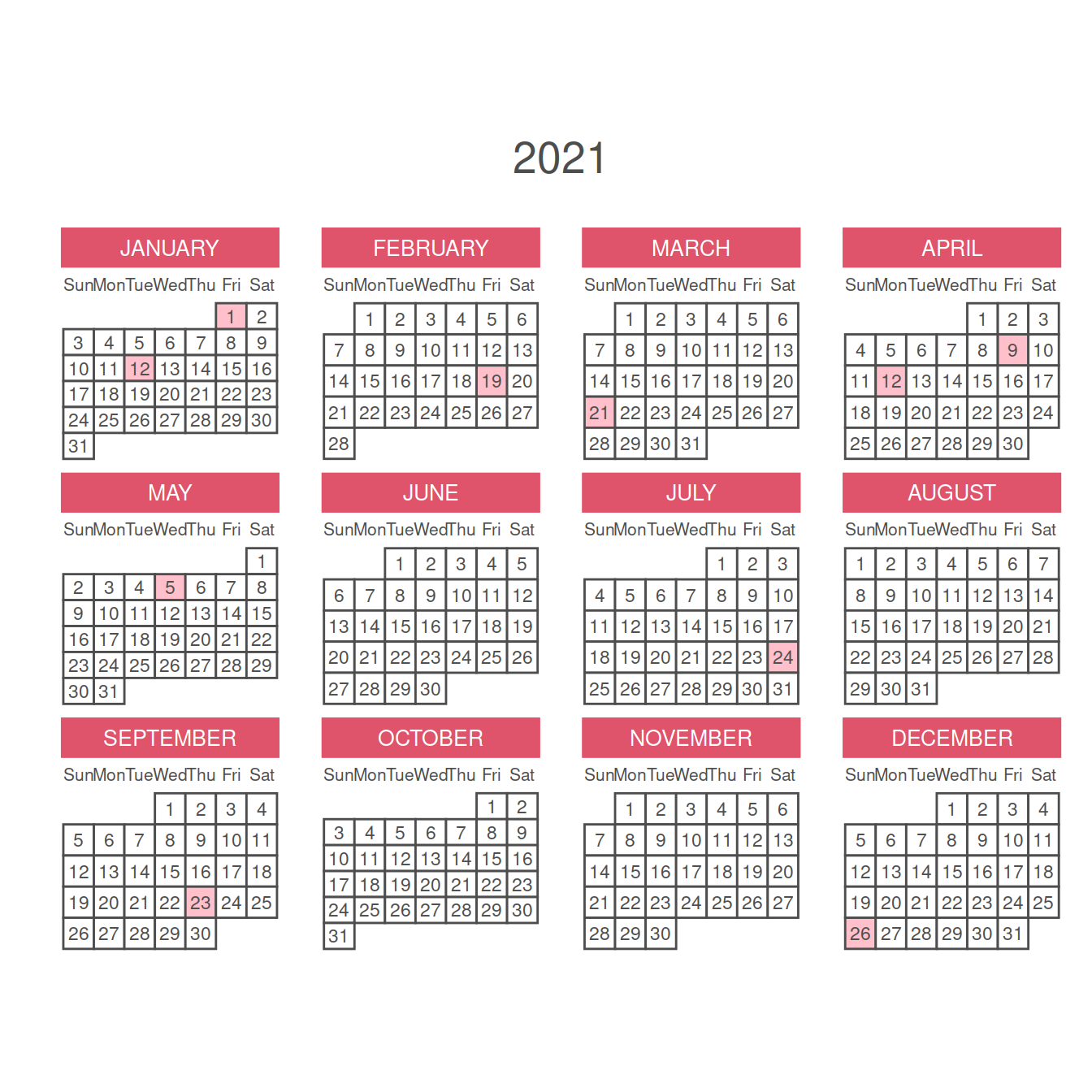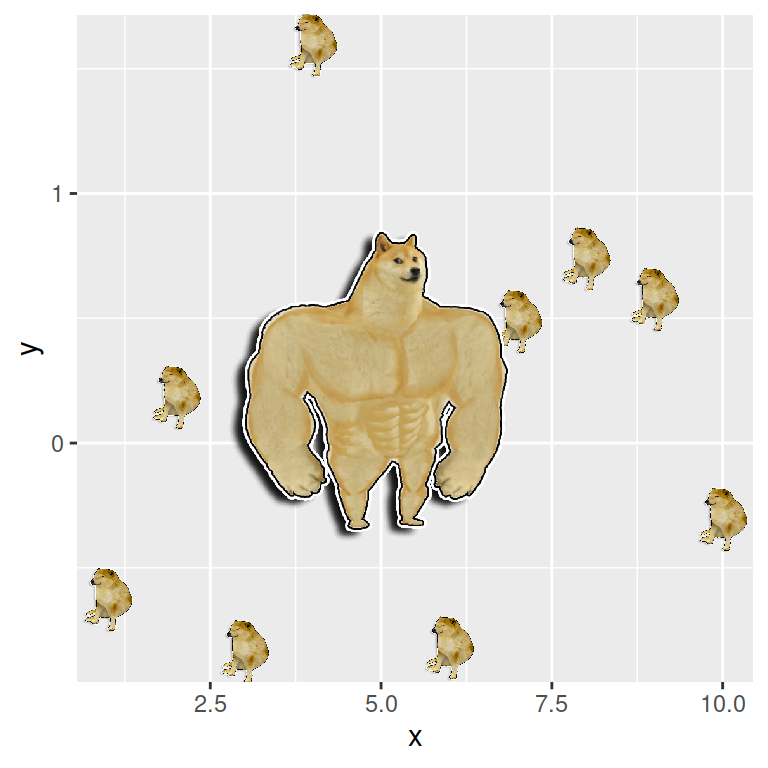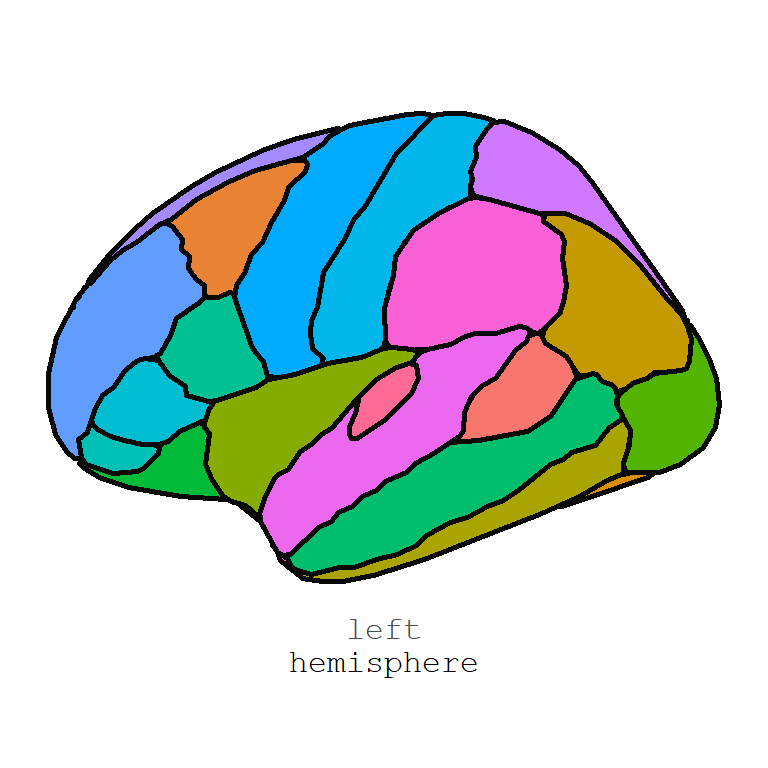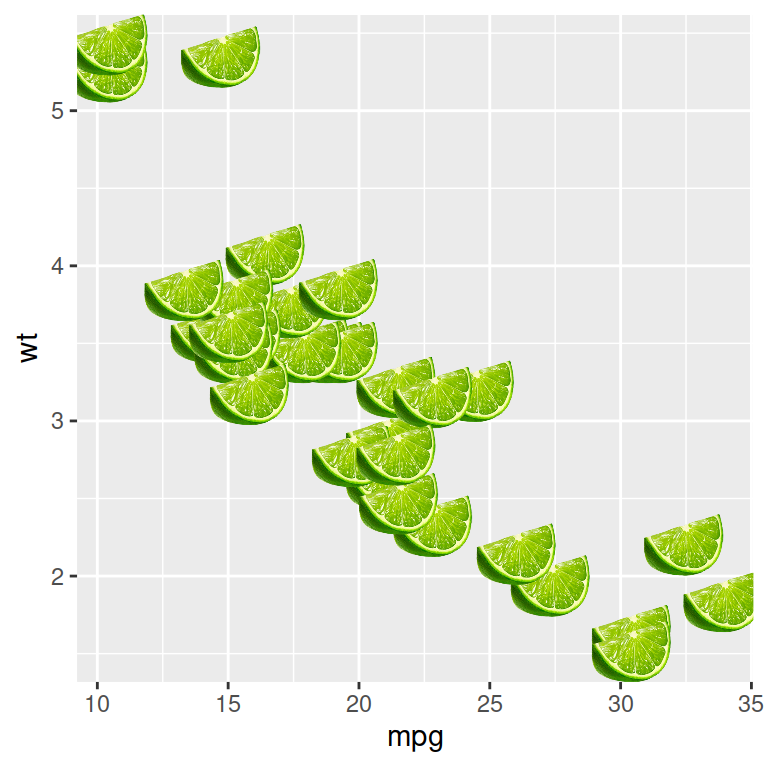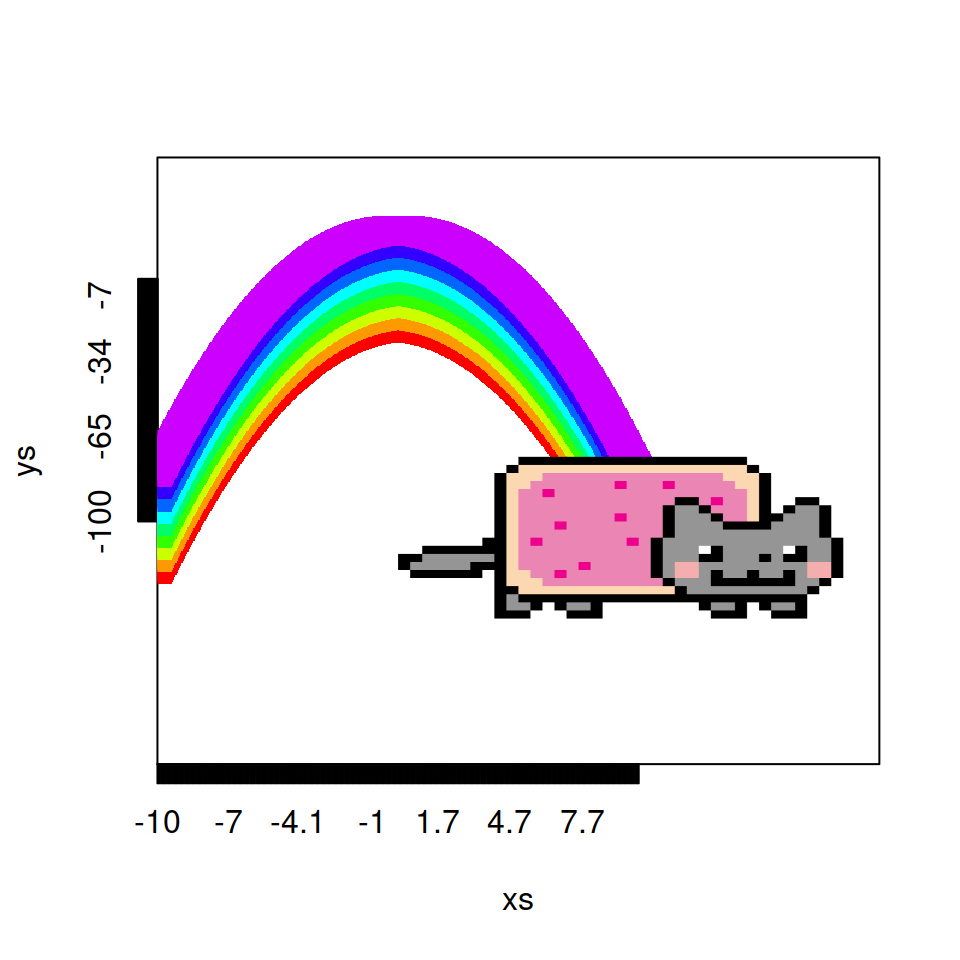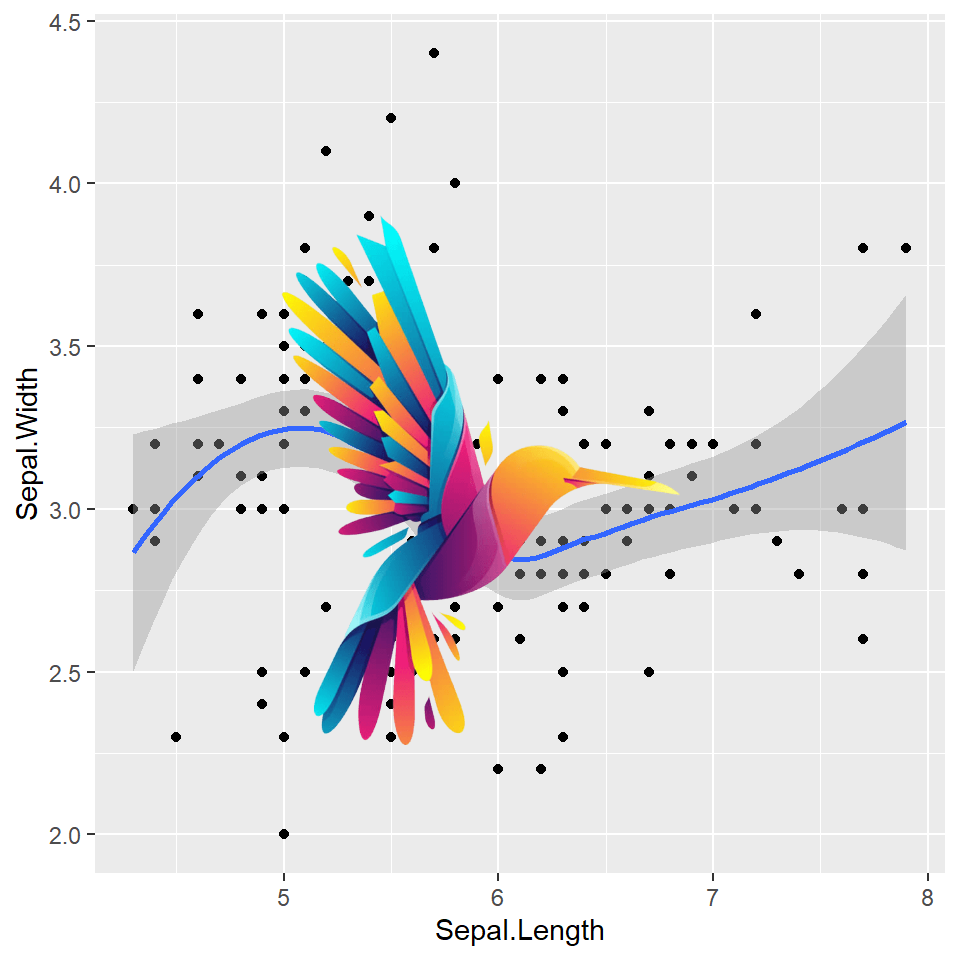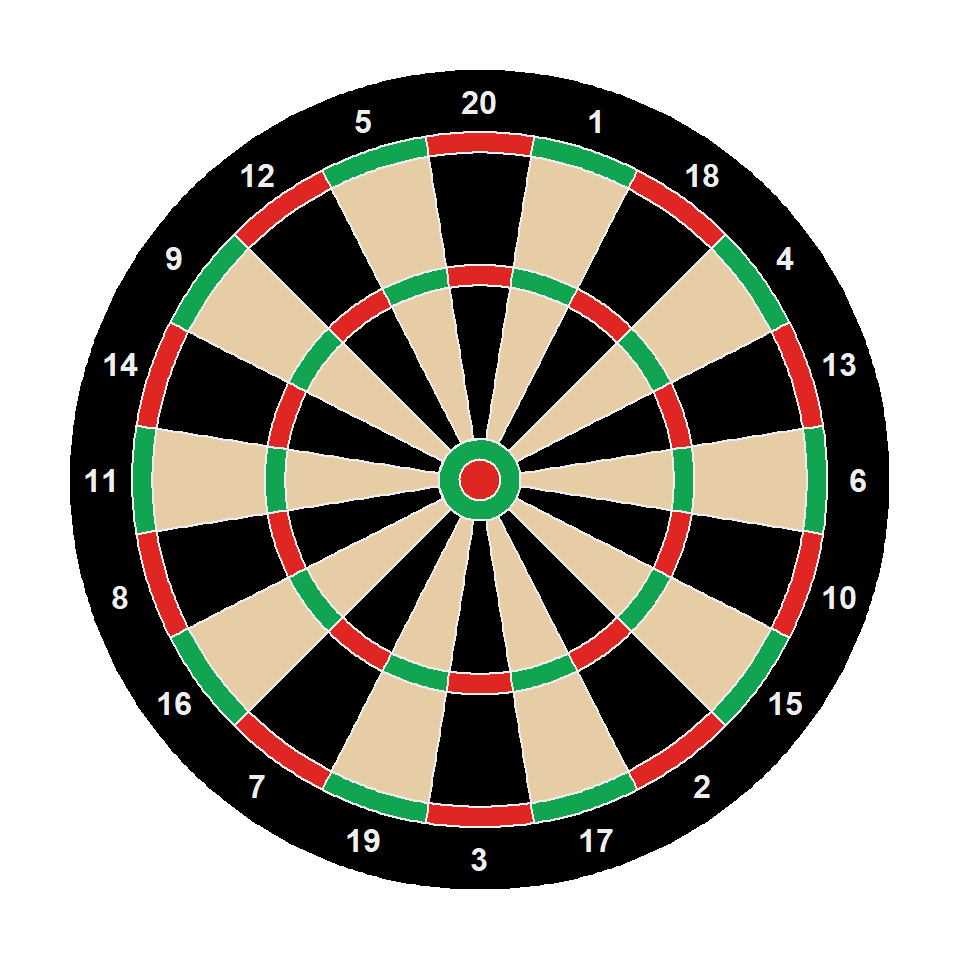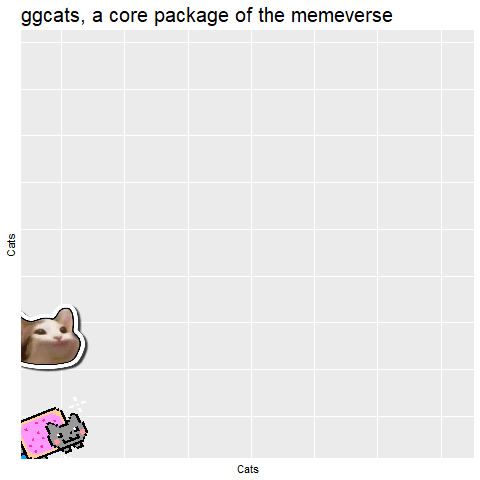Search the desired emoji
Each emoji can be specified with a code. You can make use of the emoji_search function to look for the code of the emoji you want to add.
# install.packages("remotes")
# remotes::install_github("dill/emoGG")
library(emoGG)
# Search for a emoji
emoji_search("flower")| emoji | code | keyword | |
|---|---|---|---|
| 1928 | wilted_flower | 1f940 | flower |
| 1940 | cherry_blossom | 1f338 | flower |
| 2748 | rosette | 1f3f5 | flower |
| 4130 | o | 2b55 | circle |
| 4131 | o | 2b55 | round |
| 5234 | eritrea | 1f1ea | er |
Using emojis instead of points
In the previous section we looked for emojis related with flowers. If you choose the cherry_blossom emoji you have to pass its code to the geom_emoji function as follows.
# install.packages("remotes")
# remotes::install_github("dill/emoGG")
library(emoGG)
# install.packages("ggplot2")
library(ggplot2)
# Plot
ggplot(iris, aes(Sepal.Length, Sepal.Width)) +
geom_emoji(emoji = "1f938")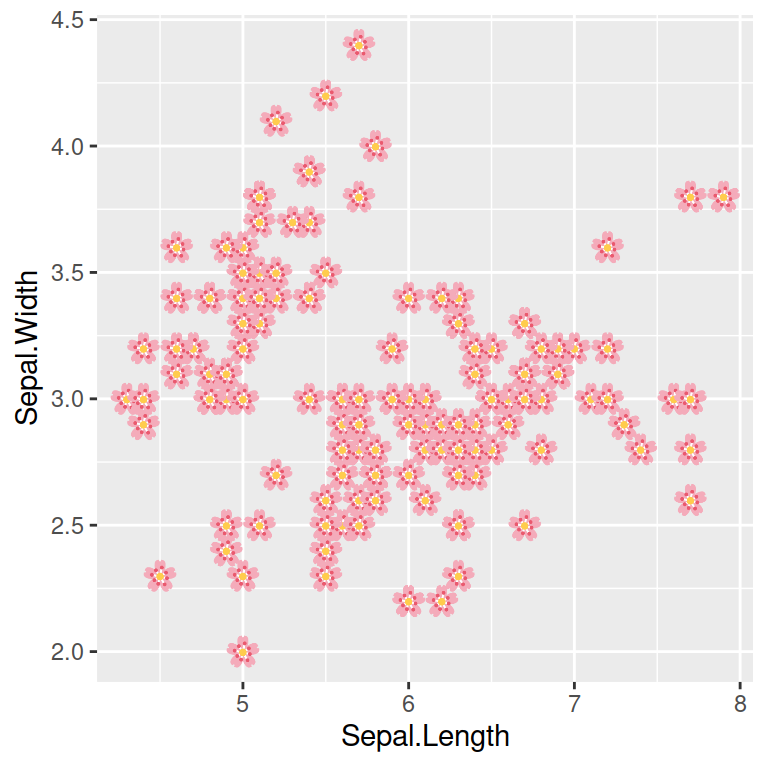
Other example can be adding diamonds to the diamonds dataset. In this case the corresponding code is "1f48e".
# install.packages("remotes")
# remotes::install_github("dill/emoGG")
library(emoGG)
# install.packages("ggplot2")
library(ggplot2)
# Sample of diamonds data set
set.seed(5)
dmnds <- diamonds[sample(nrow(diamonds), 800), ]
# Plot with real diamonds
ggplot(dmnds, aes(carat, price)) +
geom_emoji(emoji = "1f48e")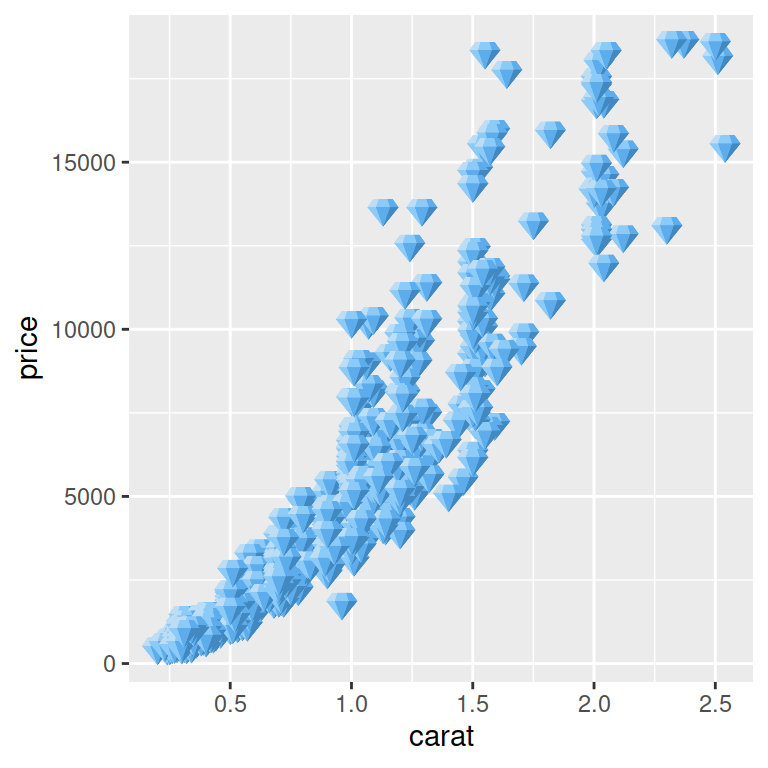
Using emojis as background image
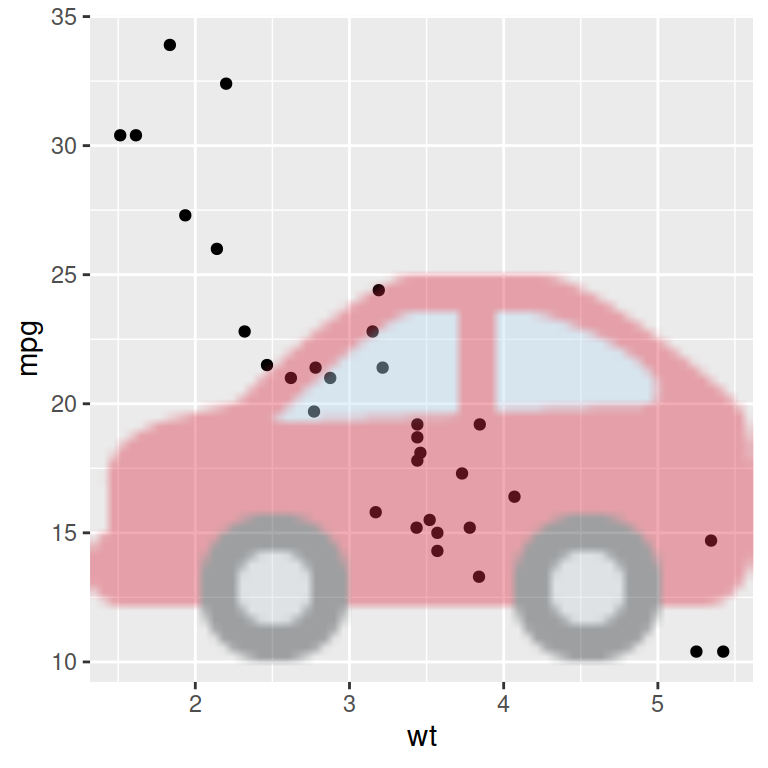
The package comes with an additional function named add_emoji, which allows you to add any emoji as a background. In the following example we are adding a car to a scatter plot made with the mtcars dataset.
# install.packages("remotes")
# remotes::install_github("dill/emoGG")
library(emoGG)
# install.packages("ggplot2")
library(ggplot2)
# Plot with car
ggplot(mtcars, aes(wt, mpg)) +
geom_point() +
add_emoji(emoji = "1f697")
